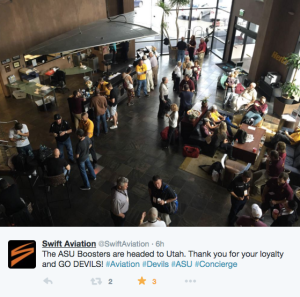
Robert Frank is one of the foremost trackers of the Super Rich. The New York Times is the paper of record. Wealth-X is one of the best sources of market information about where the Ultra High Net Worth are from, how they made their money, and what they are spending it on. Thus, I have to say I was a little disappointed to read, “For The New Super Rich, Life Is Much More Than A Beach” in the gray lady.
While nothing in the story was inaccurate, not much was new, and further, if your business is about marketing and selling luxury products and services to the rich, it missed a few key points, in a forest through the trees sort of way. Then again, if you just happened to be enjoying a lazy weekend and never gave a thought about the lifestyles of the very rich, it would have served as a good primer.
Frank’s notable book, “Richistan,” published in 2007 was and still is a must-read if your business depends on luxury consumers. If you put that together with “Plutocrats: The Rise of the New Global Super-Rich and the Fall of Everyone Else,” by reporter turned politician Chrystia Freeland, you will be a few miles ahead of many of those you are competing against. If you are looking for a third read, that takes focuses on where the rubber hits the road when it actually comes to selling your products and services to UHNWs, the 2007 book I co-authored with Russ Alan Prince, “The Sky’s The Limit: Marketing to the New Jet Set,” was based on over 600 interviews with owners of private jets. In it, we created three pyschographic buying personalities designed to help marketers better target their efforts in both audience, messaging and content.
So where was Frank’s NYT piece spot-on? Identifying the Super Rich as a global species that is constantly on the move, hopping from one spot to the other and hard to pin down, is something I have been on my soapbox about for more than a decade, so to have two top figures in such prestigious media stating this, brings me to a happy place. It is a key reason traditional media strategies are not effective in targeting the UHNW segment, which Wealth-X notes accounts for $234 billion in luxury lifestyle spending, about 20 percent of the total luxury market!
To give you a two-sentence recap of the article: Today’s Super Rich fly around the world in their private jets, mainly keeping within the same circuit that includes New Year’s in St. Bart’s, Davos, some winter weekends in Palm Beach, The Milken Institute Global Conference in Beverly Hills, Art Basel in Basel, New York art auctions, The Masters golf championship in Augusta, Cannes Film Festival, Royal Ascot, dividing your summer between the Hamptons, south of France and Sardinia, and then onto the fall winding down with Miami’s version of Art Basel. Frank and David Friedman, President of Wealth-X, accurately point out that off the highway are many side routes, such as The Kentucky Derby, Wimbledon, the media confab in Sun Valley, the car collector’s delight at Pebble Beach every summer and so on.
Here is where the article from my perspective is a bit off course. Even at the headline events, there is only a small fraction of the global UHNW population in attendance. At the World Economic Forum in Davos, the grand daddy of elite hobnobbing according to the hosts, there are only 2,500 participants. St. Bart’s between its hotels, villas and yachts can only handle a couple thousand of the Super Rich at one time, if that. At the same time, Wealth-X pegs the global Super Rich population at 212,000 households, and since households include a partner and children, you are talking about around 800,000 actual people. While this may not be relevant to the general consumer readership of The New York Times, if you are involved in selling or marketing to the Super Rich it definitely is. If you are selling luxury travel or hard goods, again, reaching the spouse and kids is often critical in getting the sale!
In media and marketing, they talk about Reach. Reach is simply the percentage of your target audience your activity has a chance to connect to. If you are running an ad in a magazine that reaches 50,000 people with a $1 million + Household Income, there is a chance they will read that issue and perhaps see you ad. That’s the reason in the world of media, there is another metric, Frequency. Most people agree, that one ad or being at one event has little impact, so the key is to have enough Frequency against your target that you get noticed.
Research by Ogilvy & Mather back in the Eighties suggested your target consumer needs to read or hear about you (TV, radio, billboards, editorial, events, POP, word-of-mouth, etc.) about a dozen times before they were likely to seriously consider buying from you. Now I don’t want to equate advertising for dish soap to marketing to the Super Rich, but the theory is something worth keeping in mind. For the last decade, many marketers were hoping the Internet would solve the problem of figuring out what part of their marketing was actually working and driving ROI. Of course, we now know that over $6.3 billion per year of whatever is being spent to drive clicks is actually fraudulent, picking your pockets with such agility that you actually thought those were real people who were interested in your message.
Back to the Super Rich: The challenge with the circuit described in The New York Times article is at even the largest of these stops, as a marketer you are reaching a very small percentage of the universe you can buy your product. If your business is based on getting a half dozen or less new UHNW customers per year, each of these events alone may provide a broad enough platform. However, the reverse challenge is that most companies that fit this profile (the guy who does six-and-seven figure home theaters, the specialist in landscaping, an independent financial advisor, etc.) is not a brand, therefore the obstacle is like the old McGraw Hill grumpy old man ad (see top of story), where he brings you down to earth, by reeling off, “I don’t know who you are. I don’t know your company. I don’t know your company’s product. I don’t know what your company stands for. I don’t know your company’s customers. I don’t know your company’s records. I don’t know your company’s reputation. Now-what was it you want to sell me?”
While I totally buy into Frank and Friedman’s Super Rich on the move thesis, let me add, where it gets more complicated is there is lots to add beyond the several dozen events they mentioned. Big college football games can attract more private jets than Art Basel Miami. Don’t forget the NBA All-Star Game and of course the Super Bowl, which draws over 1,000 private jets. There is the Olympics, the World Cup, and the list obviously goes on and on and on. Hot spots such as Ibiza and Turkey are drawing the Super Rich from traditional Med destinations. There are major fishing tournaments like the Bisby in Cabo that draw dozens of private jets, and today’s more active UHNWs can be found running in triathlons, fishing in Scotland, hunting in Mexico, hiking in Nepal, kite-surfing off Puerto Rico, riding big wave surf of Costa Rica one week and Indonesia, maybe today at the U.S. Open Golf Championship, or just somewhere with family celebrating Father’s Day.
In other words, where I think the story misses, is the insinuation that a large percentage of the Super Rich can be found in any one place at one time. Numerically, that is just not true. At certain times there are more than normal, but still not a significant portion of the UHNW population. This doesn’t mean that it doesn’t make sense to set-up a pop-up shop in the Hamptons as Hermes has done (of course most people know the Hermes name, if not all of the products they make), and explore opportunities to sell your services at these places.
Just keep in mind, you’re as likely to find the Super Rich at Levi’s Stadium to watch the San Francisco 49ers as Art Basel Miami. Finding them amongst the throngs is not often as straight forward as one would hope. Moreover, each of these events will only bring you to a small segment of the population. The larger challenge is 90 percent of this target audience, having not necessarily come from money, and being first generation wealth, is not as familiar with what you are selling as you may think. To create an effective UHNW strategy there is a lot of work to be done before you meet your prospect face-to-face, as our friend from the Mc Graw-Hill ad suggests.




















